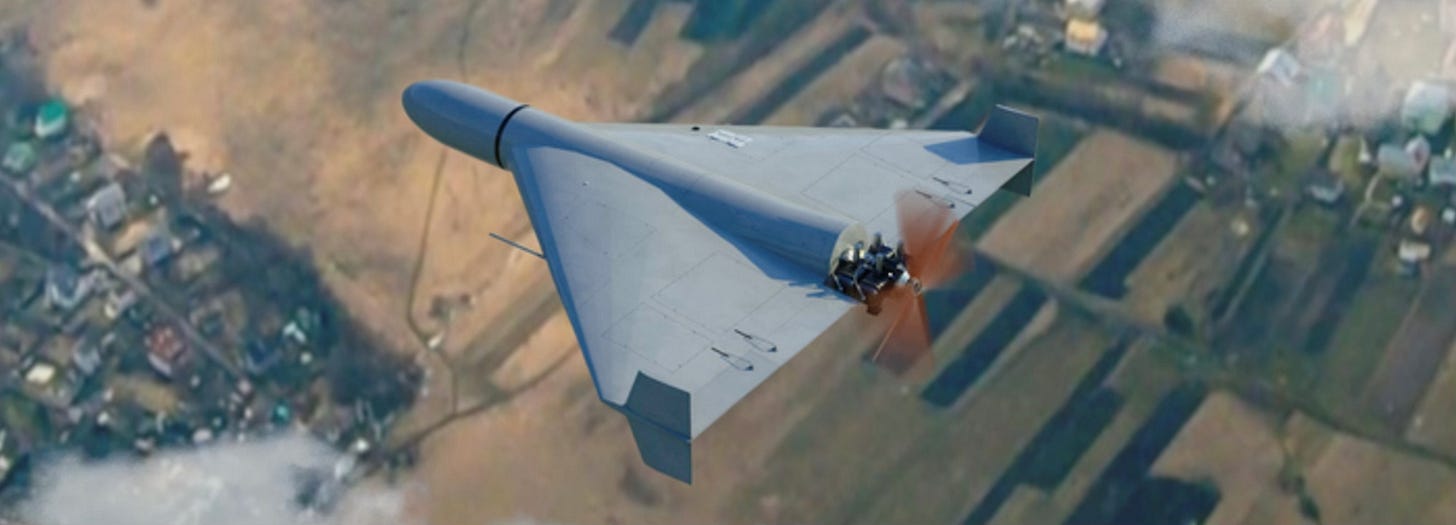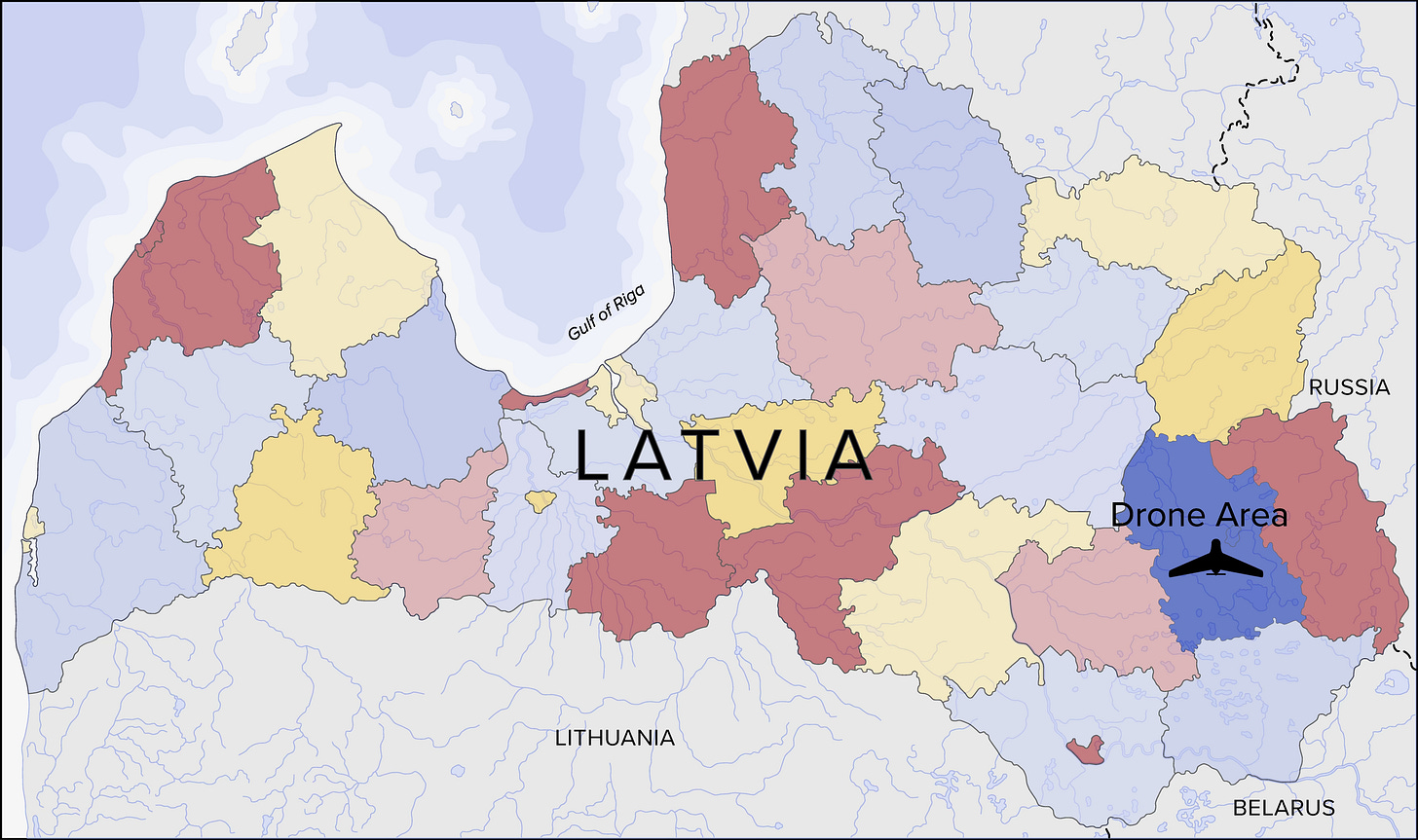An Armed Russian Drone Shakes Latvia’s Defense System
By Māris Andžāns - The entry and landing of an armed Russian drone into Eastern Latvia is one of the most significant military incidents in the country's recent history.
On the morning of September 7, an armed Russian kamikaze unmanned aerial vehicle (UAV) landed in Gaigalava parish in Eastern Latvia. The UAV was a Shahed 136-type drone of Iranian descent, which Russia uses widely in its war in Ukraine. These UAVs are slow and loud, earning them the nickname “flying moped.” However, since these drones are cheap and have a simple design, Russia, which calls them Geran-2, can afford to produce and use them in mass.
Russian drones and missiles entering NATO territory are no longer an extraordinary event. A day after the incident in Latvia, Romania reported a Russian drone had entered its airspace. Earlier, there were other incidents with flying objects of Russian descent, not only in Romania but also in Poland. In March 2022, a vintage Soviet-era drone crashed as far as Croatia.
Latvia borders Russia and Belarus, but it does not border Ukraine. Therefore, the Russian drone's landing in Latvia came as a surprise to both the public and, ostensibly, the Latvian armed forces. Air defense, which is typically a complex and expensive endeavor, is far from ideal in Latvia. The country currently has no fighter jets and no long- or medium-range air defense systems. (It is working to procure the IRIS-T medium-range system together with Estonia.) To be fair, NATO countries with more sophisticated defense measures have experienced similar incidents, which only underscore the difficulties of identifying and downing such UAVs.
The incursion of the Russian drone became one of the most significant military incidents in recent Latvian history. It is also arguably the most damaging to the reputation of the Latvian National Armed Forces, which typically enjoy high trust among the public. Though this was only a lone drone and there were no casualties, the incident brought a storm of criticism over the (in)action of the armed forces and how the defense sector communicates with the public.
To start, the Latvian public was informed of the incident a full day after it occurred and in rather vague terms. Even the head of the respective municipality learned of the incident only the next day — from the media, not the defense sector. (A few nearby households were informed of the detonation of the drone explosives, though the blast was heard and felt as far as three kilometers.) It took another day to call for a press conference, which left essential questions unanswered. It remained unclear what the Latvian armed forces did or did not do, apart from monitoring the drone while airborne. The Russian drone ostensibly entered Latvian airspace from Belarus, managing to fly some 100 km from the border. Many wondered why the drone had not been downed and what would have happened if the UAV had crashed in a city. The exact route of the drone was not made public, though judging from the map, Rēzekne, the second largest city in Latgale might have been near or even on the drone's route.
While Latvian institutions assume Latvia was not the target of this drone, it should not be completely ruled out that this was a deliberate attempt by Russia to test and tease Latvia’s defense system.
Latvian institutions have since launched an investigation into the incident, called on NATO allies to enhance Latvia's air defenses, and improved defenses at the Eastern border. Russia — predictably but implausibly — denied responsibility. While Latvian institutions assume Latvia was not the target of this drone, it should not be completely ruled out that this was a deliberate attempt by Russia to test and tease Latvia’s defense system.
The UAV landing will likely serve as a prompt to boost Latvia’s defense capabilities. The incident came as a stark reminder that despite investments in Latvia’s defense (notably, this year, Latvia is estimated to spend 3.15% of its gross domestic product on defense), there remains significant room for improvement. Until recently, Latvia viewed its eastern border predominantly as a land border. As such it has focused on building a fence on the border with Russia and Belarus (including in response to the weaponization of migration) and is working on the construction of the Baltic Defense Line, consisting of anti-tank ditches, dragon's teeth, and other obstacles.
Already now, more attention is being devoted to identifying and countering threats from the air in the border regions. Additional armed forces units were deployed to detect and counter similar threats. Following indications of a similar incident in the making on Sept. 17, NATO fighter jets were scrambled from Lielvārde airbase to identify a flying object approaching from Belarus. Though the object turned out to be a flock of birds, this case indicates progress in response to potential incursions.
The drone incident already serves as a lesson on how (not) to communicate with the public in such cases. The defense sector admitted that they are learning lessons from this incident. In future cases, municipalities will be informed immediately of the situation and will be involved in communicating with local constituents. However, this incident holds broader lessons on crisis communication. It became clear that the public wants access to more information in future cases. Further steps should be taken to institute more active, broader, and more inclusive communication on defense and security matters wherever possible. The institutions in charge should also be ready to admit mistakes if they are made, and if their influence over such incidents is beyond their reach.
Māris Andžāns is the Director of the Center for Geopolitical Studies Riga and an associate professor at Rīga Stradiņš University.





